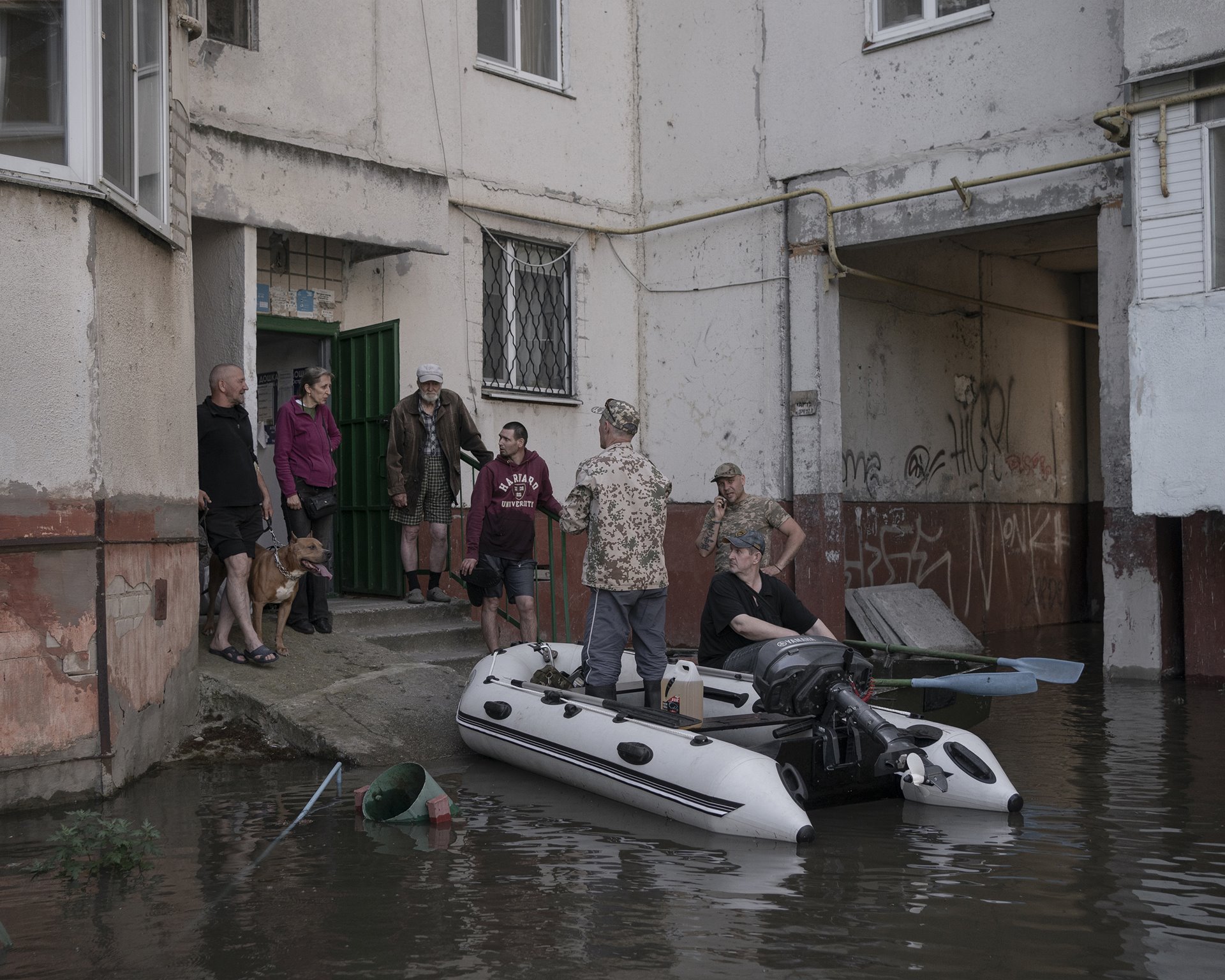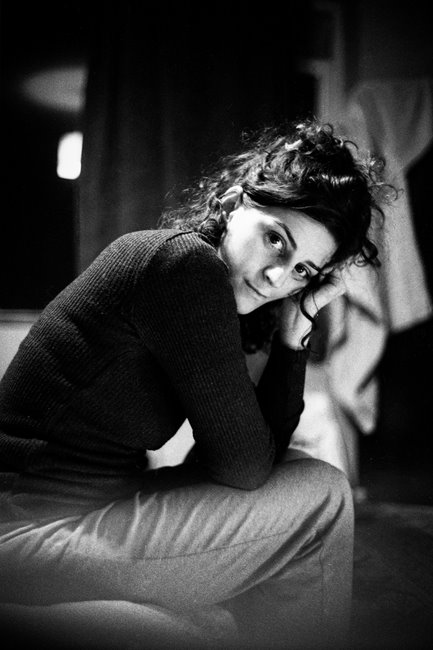Viktor and his volunteer team evacuate Valentina and her dog Boss from Korabel, an island that forms part of the city of Kherson, Ukraine, and was the area most affected by the floods.
On 6 June 2023, explosions damaged the wall of the Russian-controlled Kakhovka Dam in southeastern Ukraine, causing extensive floods in Kherson, downstream on the Dnipro River. Kherson, a strategically important city in the Russia-Ukraine war, had been one of the first to be occupied by the Russians in March 2022. In November that year, Ukraine retook the city, which is on the west bank of the river, forcing Russian withdrawal to the east bank.
The cause of the explosions is disputed, with both Russia and Ukraine accusing each other of blowing up the dam. Other sources cited neglect of the dam’s maintenance and infrastructure, or mines that had washed free of riverbanks as causes. After the initial breach of the dam, the force of the water flowing out damaged it further.
The breach in the dam flooded at least 17,500 homes on both the Ukrainian west bank and the Russian-held east bank of the river, according to a Kyiv School of Economics report. An AP investigation in December 2023 put the death toll in the hundreds. Flooding lasted 19 days, and rescue and recovery efforts were hampered by Kherson’s proximity to the frontline, as the city suffered ongoing shelling.
The Kherson flood highlights the issue of the weaponization of the environment and natural resources. Russian forces have used deliberate flooding to slow down the Ukrainian counteroffensive in the past, either by breaking existing dams or building new ones, according to Bellingcat and the Kharkiv Human Rights Protection Group. Ukraine admits using similar tactics at the start of the war. Ukraine subsequently investigated the destruction of the Kakhovka Dam and began building an ecocide case against Russia for the International Criminal Court.
Are you a photographer and/or passionate about press freedom? Sign up for our newsletter to stay updated on our annual contest and to hear about exhibitions near you.

